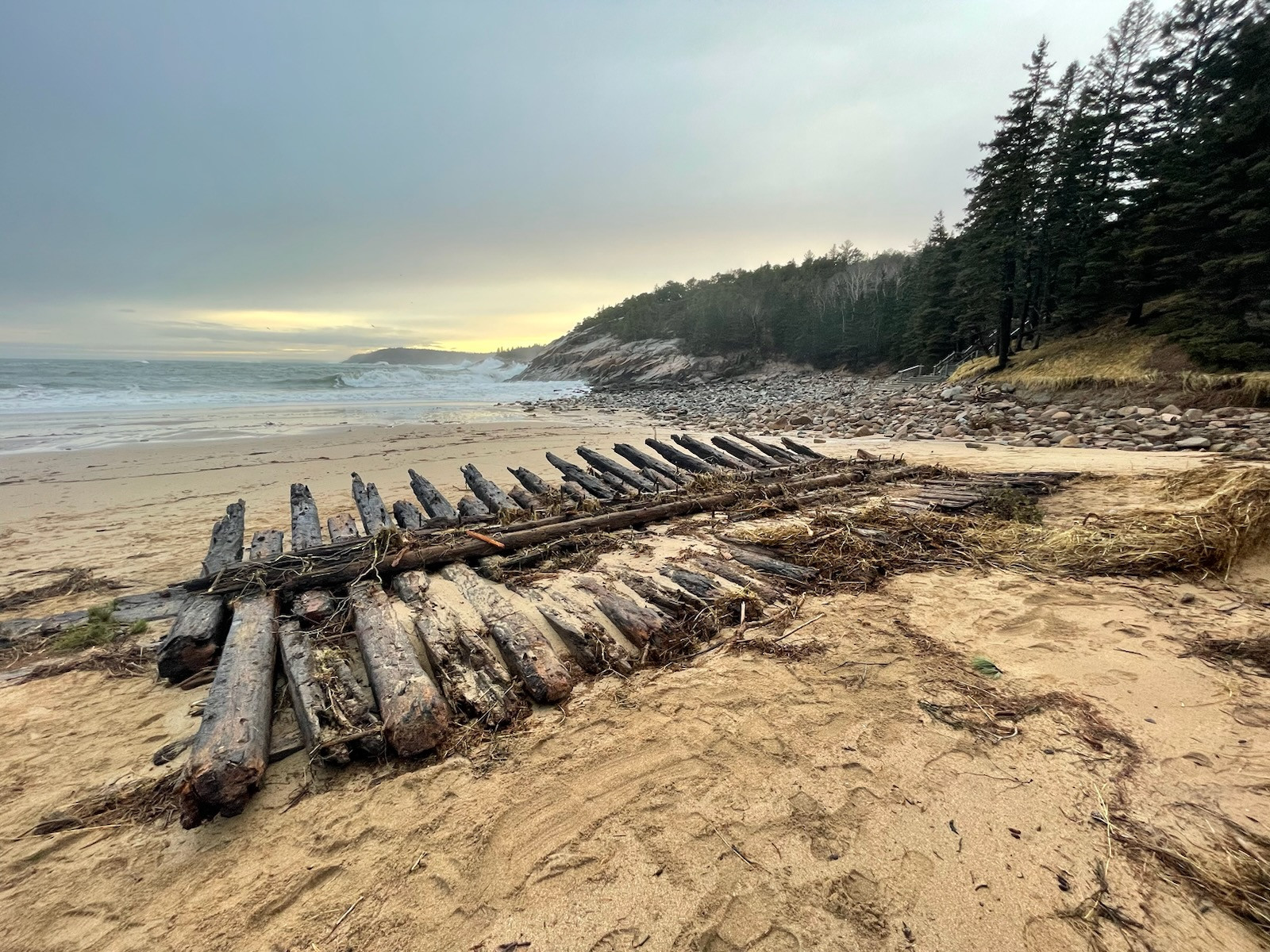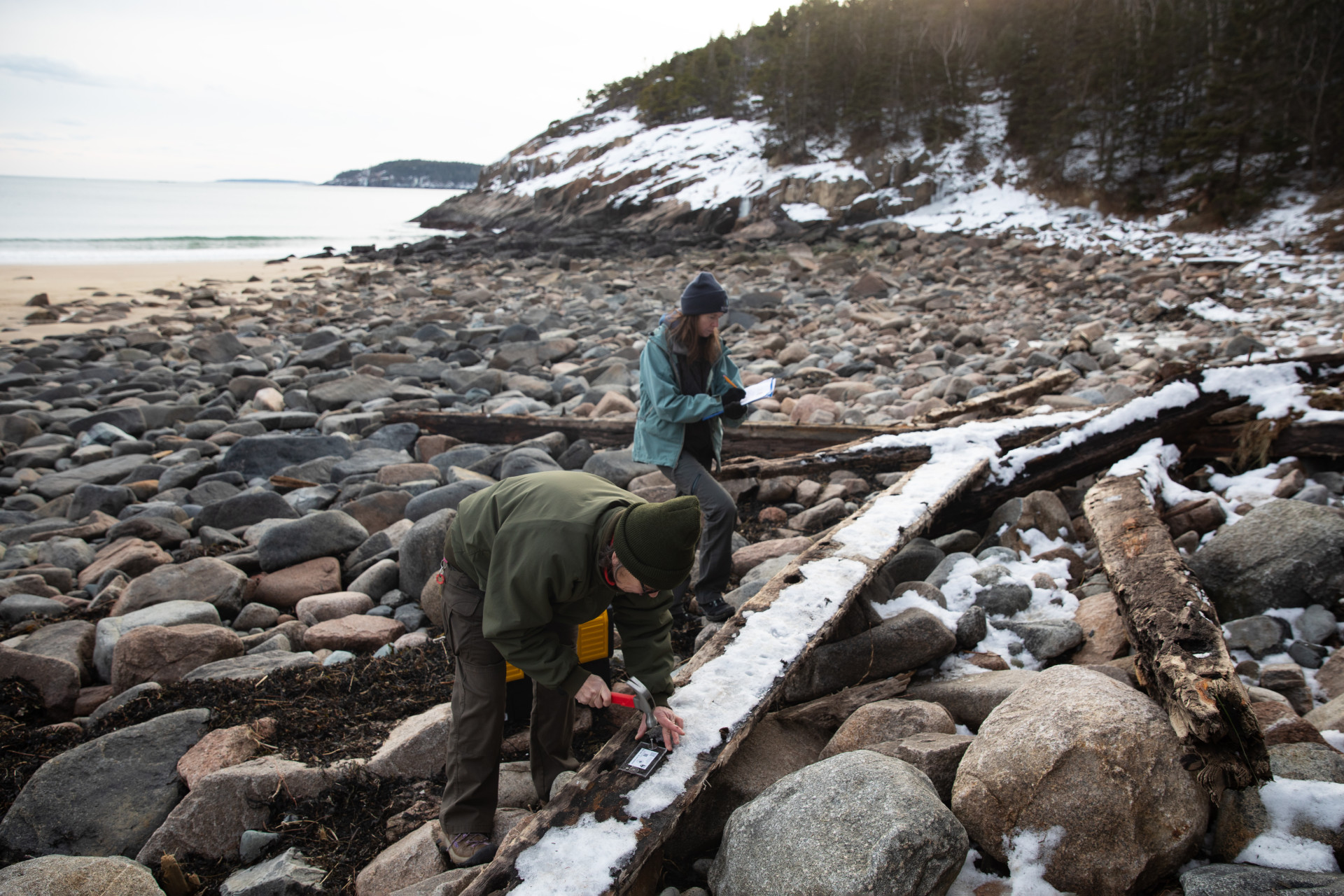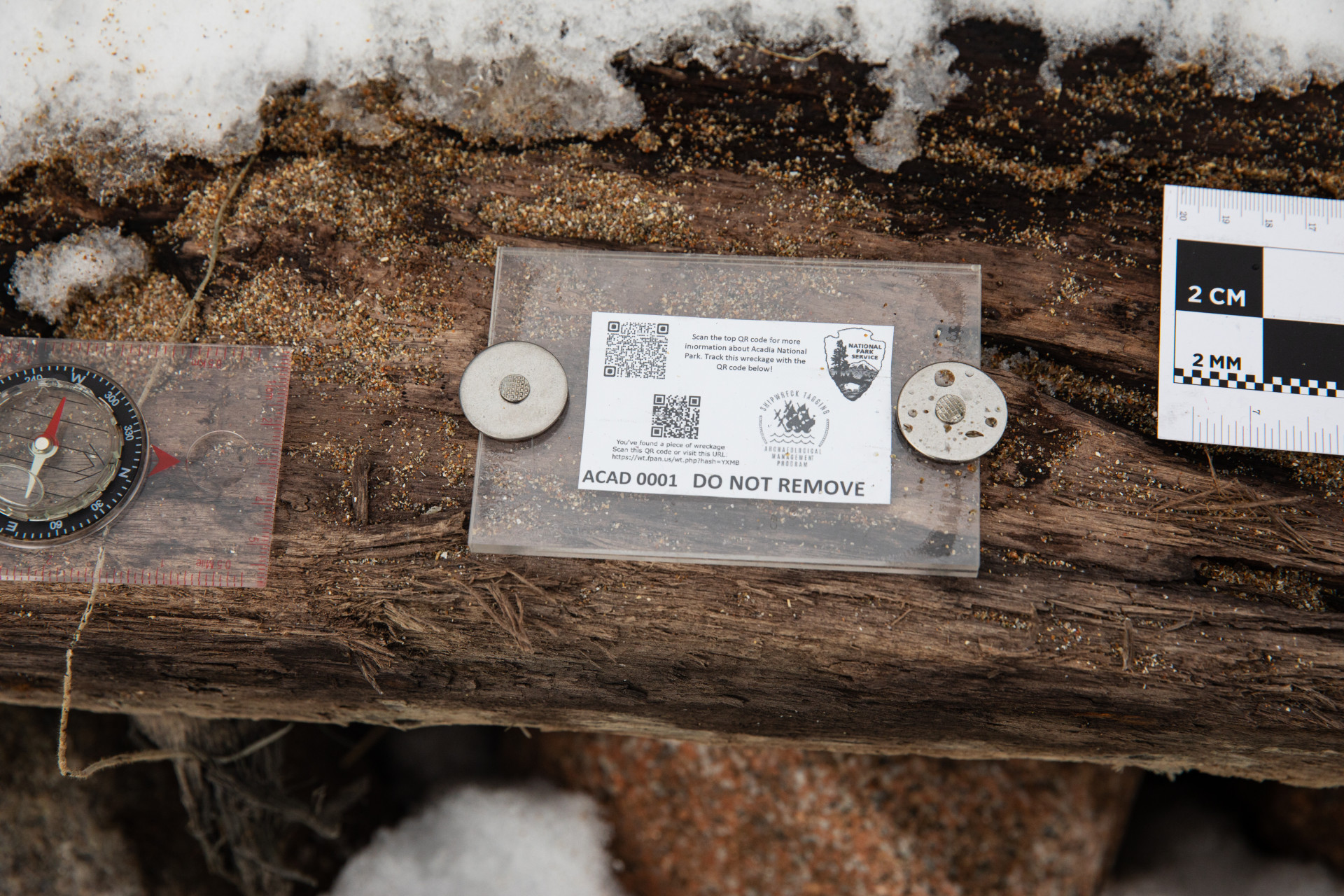The Remains of the Tay
Intense Storms Revealed the Shipwreck at Sand Beach, Then Broke it Further Apart. Now we Can Track What Remains.
March 7th, 2024
Intense Storms Revealed the Shipwreck at Sand Beach, Then Broke it Further Apart. Now we Can Track What Remains.
March 7th, 2024
BY SHANNON BRYAN
As high tide retreated from Sand Beach during an exceptionally powerful winter storm on January 10, it carried off with it a good deal of sand. In the process, it uncovered the remains of the sailing schooner Tay, which wrecked on Sand Beach in 1911.
The energetic waters at Sand Beach spirit a good deal of sand away most winters, only to return it months later. It’s a seasonal cycle that most summer visitors aren’t aware of.
But the appearance of the Tay – its remnants jutting out from the beach like the wooden ribcage of some ancient seafaring beast – is less common.

Remnants of the Tay rest on Sand Beach after being exposed by a winter storm January 11, 2024. (Photo by Zach Hunt/NPS)
The Tay grabbed the attention of locals and park visitors who wandered onto the beach to see it for themselves. National news outlets wrote about it. On social media, people shared memories of seeing it years ago, with one woman reminiscing about how she and her family once hung their towels on the remains when they went down for a swim.
Loaded up with spruce planks and shingles, the Tay was headed to Boston from New on July 28, 1911, in a heavy southwest gale. Around midnight, the Tay struck a ledge off Mount Desert Island and broke into pieces.
The captain and crew clung to the schooner’s broken mast until the tide went out. They hastened to the safety of Sand Beach, minus cook J. B. Whelpley, who was lost when the Tay came apart.
What was left of the wrecked schooner was eventually overcome by sand and buried out of sight, only to be alternately uncovered and recovered over the last 112 years.
> Read more about the shipwreck
No doubt, the Tay would have been buried again following the January 10 storm. But a second storm arrived on January 13. The high tide waters tugged at the Tay, eventually dragging it out into the surf. The next high tide deposited it back on the beach, where it broke further apart as the tides continued to flood and ebb.

Rebecca Cole-Will, Acadia’s chief of resource management, and Catherine Schmitt, Schoodic Institute, tag the remains of the Tay with QR code labels. (Photo by Julia Walker Thomas/Friends of Acadia)
Rebecca Cole-Will, chief of resource management at Acadia National Park, tagged what remained of the Tay with Shipwreck Tagging Archaeological Management Program QR code tags. When scanned, the tags send the user to an information page about the history of the wreck. Users can also share location information and images to help track where the individual pieces move over time.
It’s a neat blend of history and citizen science. It’s also a good example of how climate change is changing the way we interact with some aspects of the park.

Shipwreck Tagging Archaeological Management Program QR code tag. (Photo by Julia Walker Thomas/Friends of Acadia)